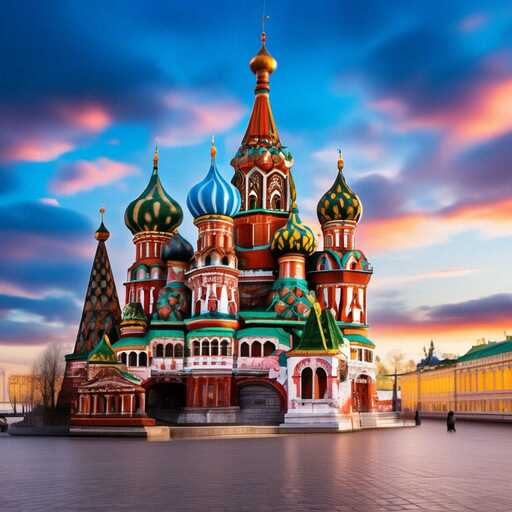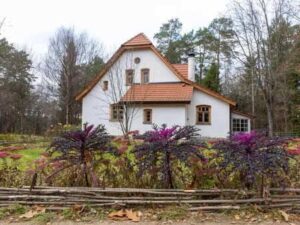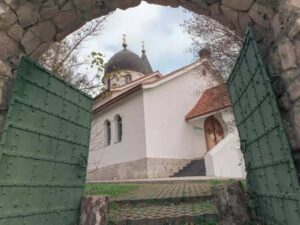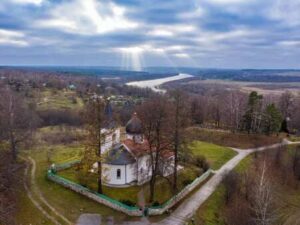Russia is renowned for its abundant history, breathtaking architecture, and distinctive culture. While Moscow and St. Petersburg are well-known destinations for travelers, there exist numerous undiscovered gems and local charms awaiting exploration off the familiar path. Our distinctive tours of Russia provide a peek into the less-explored corners of this extensive and varied nation. Visitors are invited to discover hidden treasures and immerse themselves in the local culture in a more personal and genuine manner.
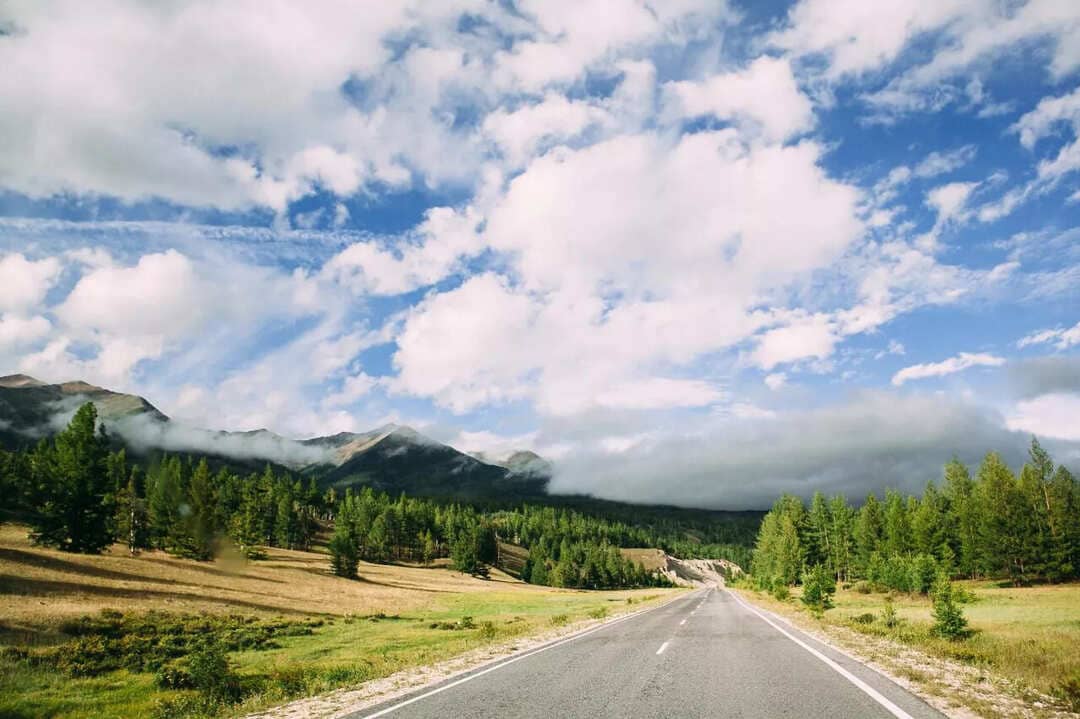
© Photo : Official page of the Republic of Buryatia
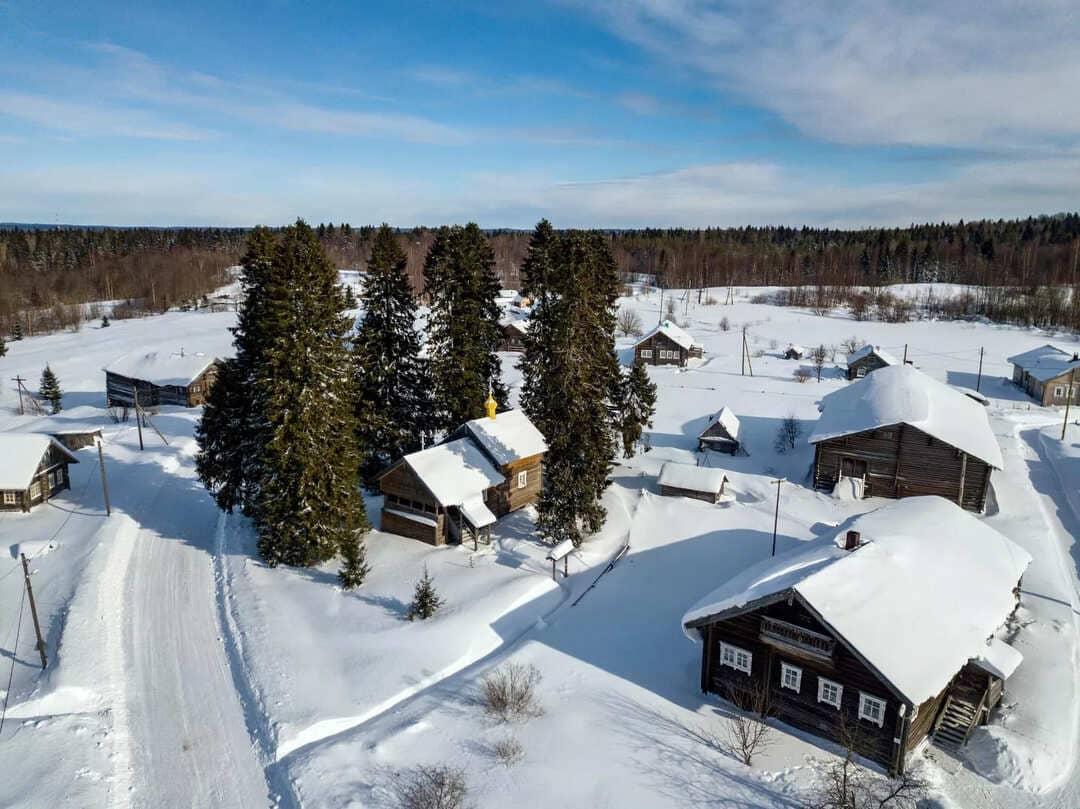
Photo: © RIA Novosti / Igor Podgorny

Photo © RIA Novosti / Vladimir Smirnov
Remote Hamlets and Serene Villages
One of the main attractions of our unique tours is the chance to explore remote hamlets and serene villages that are usually omitted from typical tourist routes. These hidden treasures offer a view into an alternative side of Russia, where life unfolds at a more leisurely pace and customs are still deeply ingrained in daily living. Travelers can wander through winding pathways lined with wooden cottages, taste traditional Russian dishes at local eateries, and delve into the history and traditions of the area with knowledgeable local guides.
Russia’s Most Breathtaking Villages
Over forty small settlements are members of the group “The most beautiful villages and towns of Russia”.
The group “The Most Beautiful Villages and Towns” in Russia is a part of a large international federation that brings together picturesque locations globally.
Undoubtedly, the charm of rural life in the nation extends beyond forty or even fifty settlements. Approximately 800 additional sites have applied for inclusion, with only around 300 set to be certified within five years. This is preceded by rigorous efforts.
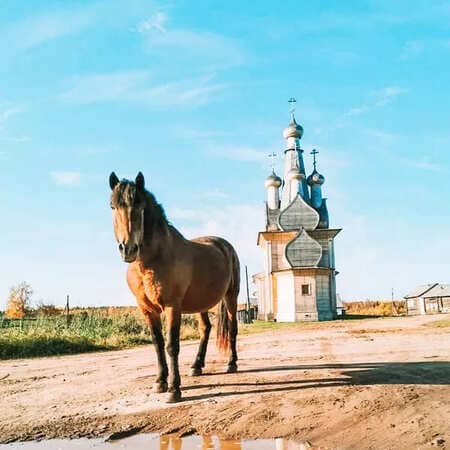
Kimzha
Kimzha, situated in the Mezen district of the Arkhangelsk region, is among the most stunning villages. It is 340 kilometers away from Arkhangelsk, with 200 of those kilometers being on an unpaved road.
“Twice a year, we are isolated from the rest of the world due to the mud,” mentions Evdokia Repitskaya, director of the Kimzha Tourist Cultural and Museum Center. — Visitors come, last winter, we had daily visits — once a group of over 50 people was accommodated. This is substantial for us, as we must cater to everyone and lead tours.”
“We have two unique villages in the Arctic region: Kimzha and Kiltsa in the Menzen district of the Arkhangelsk region,” mentions Alexander Merzlov. The first, according to the specialist, is remarkable for being home to the world’s northernmost windmill museum. They rotate in their entirety, not just the blades.
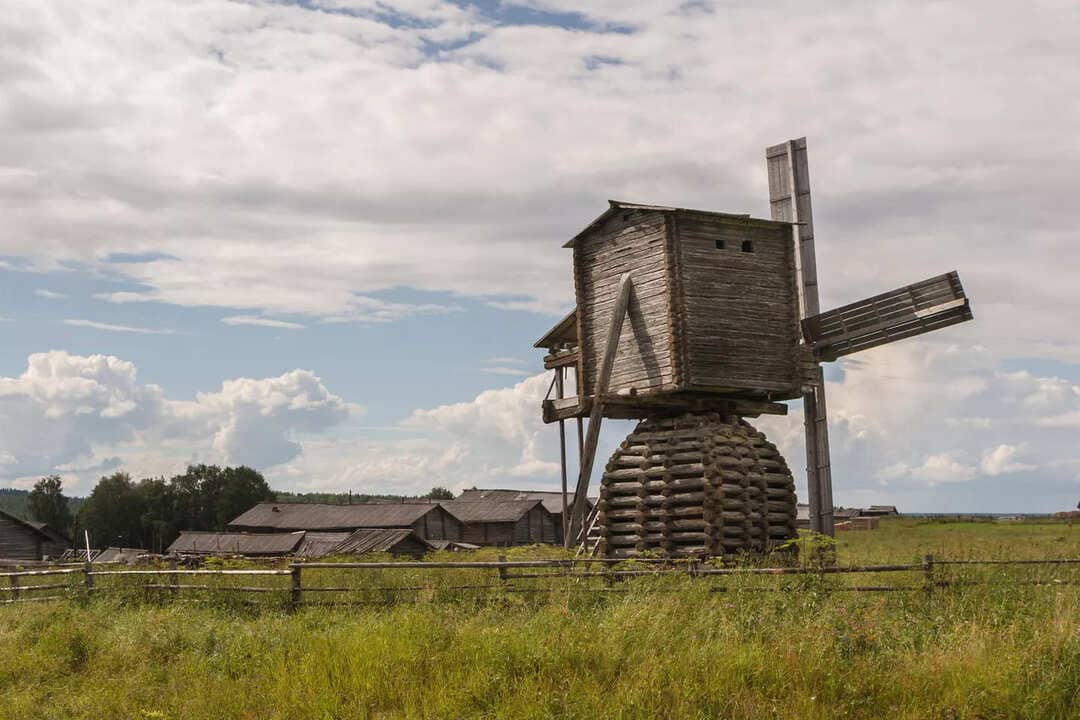
Photo: Denis Vetluzhsky / Windmill: Kimzha, Mezen district, Arkhangelsk region / Cropped image
“We have two windmills,” enlightens Evdokia Repitskaya. — One was operational until the 1950s. The other one was partially dismantled by the owner before its completion.”
A team of Russian and Dutch experts restored both. These constitute the landscape museum complex “The Northernmost mills in the world”.

Interestingly, travelers may find it challenging to travel there independently for another reason — the absence of signage. “We are unable to place tourist signs on federal highways in any manner. We will address this with the State Duma and the government,” notes Merzlov. According to him, there are numerous beautiful villages in regions like Vologda, Arkhangelsk, and the Republic of Buryatia. “But how does one reach them without knowledge,” he adds.
Kilca is approximately 12 kilometers from Kimzha, and it possesses a distinct character. “In Kimzha, there are spacious Pomeranian residences, while in Kilca there are large ones with eight windows, spanning two stories,” clarifies Alexander Merzlov. “The houses are beautifully adorned, standing along a sizable river.” Several years ago, volunteers, including foreigners, in collaboration with the local community, restored the well. Without any external funding. This serves as a commendable example, emphasizes the expert.includes.
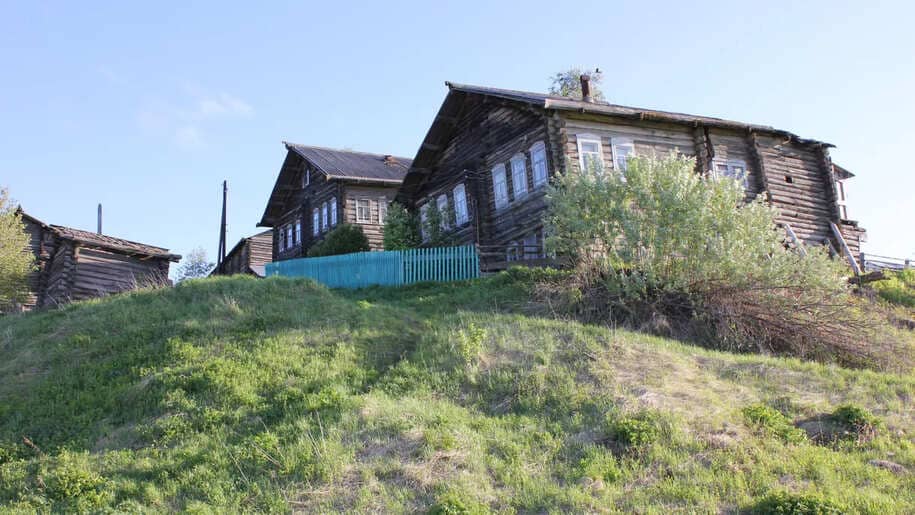
© Photo : Anna Kryuchkova / Center for Tourism and Culture Development of the Arkhangelsk region
Porechye-Rybnoye: the tallest bell tower
“I visited Porechye-Rybnoye several times, and then I discovered that my great—grandfather, Alexander Kozlov, served as the mayor there and took part in the construction of the bell tower,” shared Dmitry Sosfenov.
— It stands as the tallest among the rural ones. Additionally, it exceeds the bell tower of Ivan the Great in Moscow by two meters.”
Porechenskaya was established between 1799-1810; it shapes a unified ensemble with the church of Nikita the Martyr. Presently, both structures are undergoing restoration.
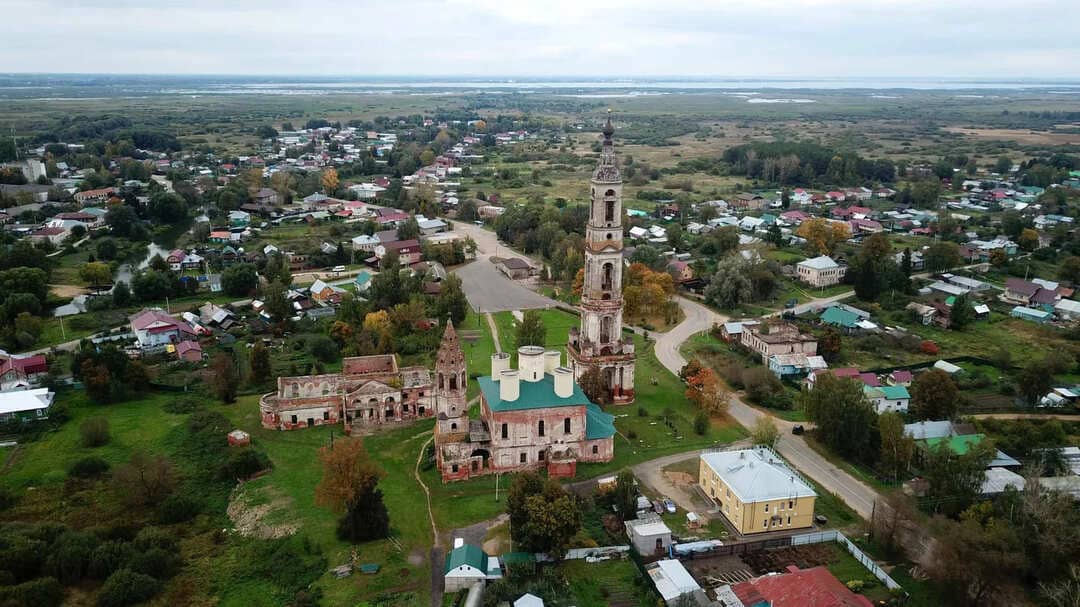
The village of Porechye-Rybnoye swiftly entered the group. Nevertheless, with just one star, there is still much to accomplish. As part of the opening ceremony on May 27, the “Made in Porechye” family festival will take place here. The event features samplings of local goods and beverages, a market, cultural performances, and workshops. Accessing the village is convenient: take the Yaroslavskoye highway from Moscow, turn right before reaching Rostov the Great.
Zehnova village: the tiniest and most picturesque
The community of Zechnova in the Arkhangelsk region is positioned on the southern shoreline of Kenozero, within a national park. According to Alexander, only three individuals live there (as per 2012 figures — 12). The narrative commences in the 16th century, when, as per one legend, the inaugural settler, Zech, established residency here.
Today, it is home to the Kenozersk pottery tradition. The watermill, the 18th-century chapel of St. John the Theologian, which holds the ancient “sky” (a ceiling of distinct design), has been refurbished. Accommodations are available, such as at the “House of Miller Abramov.”
Kinerma village: charm sans rivers and lakes
Prior to Zehnov, the title of the smallest village in the group was held by the Karelian Kinerma. “A local resident and activist, Nadezhda Kalmykova, once mentioned to me that the settlement has retained its original state because no lake or river surrounds it. Hence, it did not attract summer residents or tourists,” conveyed Alexander Merzlov.
At present, it stands as an authentic village, featuring a chapel within the sacred grove. This setup echoes paganism.
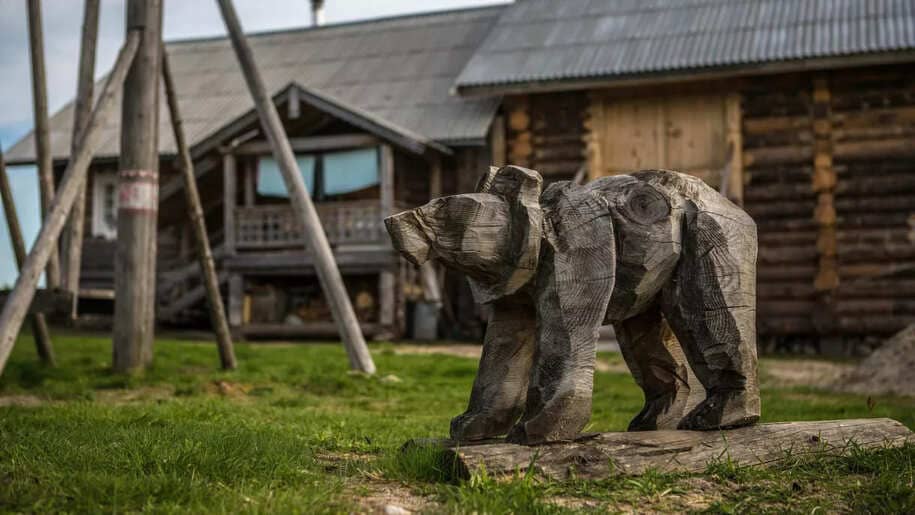
© RIA Novosti / Ilya Timin
Notably, the oldest Karelian bathhouse is the “in black” one. A rare spectacle, people even travel from Finland to witness it. Culinary offerings are another attraction for visitors. “You will learn the art of preparing the famed Karelian gates in a traditional Russian oven,” pledges the village’s website.
By the way, reaching there is not arduous: a two-hour drive from Petrozavodsk by car or bus.
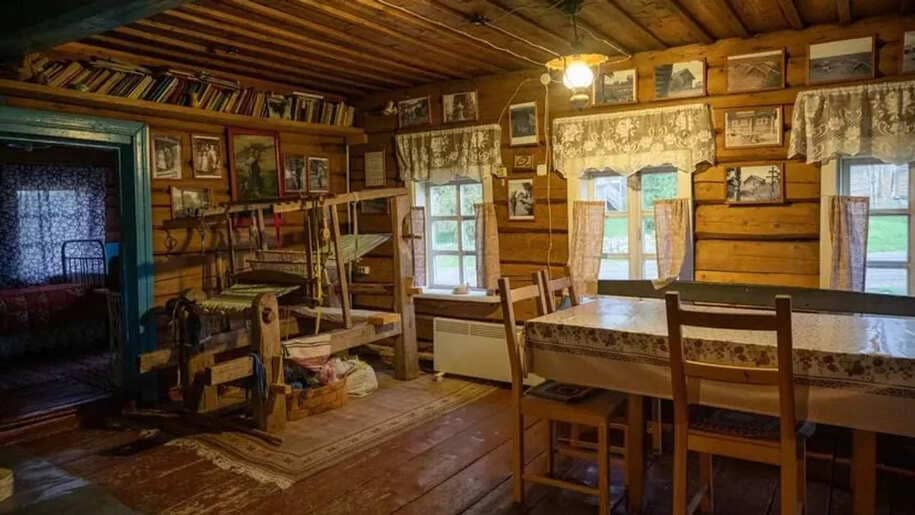
Ulus Forty: yurts crafted from wood and buuzas made with yak meat
Ulus (an administrative-territorial unit, settlement, camp) Forty is located in Buryatia, along the Oka River (named after the same), to the south of Lake Baikal. The village has recently received certification, with the inauguration scheduled ahead.
The indigenous population comprises Soyots, and the ulus has retained its unique identity. A museum housed in a wooden yurt allows visitors to explore the region’s history and inhabitants. Interestingly, the more corners a yurt has, the wealthier its owners are.

© Photo : Official page of the Republic of Buryatia
In addition to the well-maintained residences and distinctive charm, the ulus impresses with its gastronomic offerings. Buuzes, made with yak meat (as the locals raise these animals), are served.
“A Frenchman named Jacques Ragon accompanied us, and after savoring the local cuisine, he declared it deserving of a Michelin star,” recollected Alexander Merzlov of the expedition. “There’s a halabuda on the path to the ulus, bustling with activity, but the food is exceptional.”
However, reaching there poses a challenge. Situated amidst the mountains, the ulus lies almost at the border with Mongolia. From Irkutsk, it’s over 400 kilometers, and from Ulan-Ude around 700.
Bekhovo: at the top of the rankings
The most splendid village in the group isBehovo — situated along the Oka River, but on a distinct side — is not merely a component of the collective. In 2021, it clinched the esteemed Best Tourism Villages accolade from the Global Tourism Organization, making it the lone recipient within Russia.
Positioned within the Zaoksky district of the Tula region, Bekhovo is in close proximity to Vasily Polenov’s estate. The village lacks even a solitary shop, yet it boasts the Trinity Church, constructed based on designs and funding from the renowned artist.
A visit here offers a chance to stroll along the Oka’s shores, admiring the picturesque landscapes. The preeminent vantage point is the “Cliff of Love,” evoking themes of romance characteristic of this diminutive yet charming village.
Russia’s UNESCO World Heritage Sites
While journeying, the craving to witness unique, extraordinary locales with a storied past invariably emerges. I propose acquainting yourself with Russia’s architectural and natural treasures listed in the World Heritage Inventory. Russia holds the ninth position in UNESCO regarding the count of safeguarded sites, comprising 20 cultural heritage spots and 11 natural reserves.
We’ve curated 15 of the most captivating attractions for you to explore. Some you might have already frequented, while others may pique your interest. After all, there’s a saying that rings true: “seeing once is better than hearing a hundred times.”
Tours of Russia: Cultural and Historical Landmarks
Apart from venturing into quaint towns and villages, our offbeat tours around Russia also incorporate visits to lesser-known cultural and historical sites that elude most tourists’ radars. From age-old monasteries tucked away in the countryside to abandoned Soviet-era edifices, these hidden gems offer a distinct perspective on Russia’s intricate and occasionally turbulent past. Travelers can delve into these locales with the guidance of knowledgeable mentors who elucidate their importance and historical context.
The historic core of St. Petersburg
St. Petersburg stands out as one of the world’s most exquisite cities. Emperor Peter I founded the city in 1703, designating it as the new capital of the Russian Empire. To this day, St. Petersburg is hailed as the northern bastion of Russia.
The historical heart of St. Petersburg teems with architectural marvels, warranting its inclusion as a unified ensemble in the UNESCO Cultural Heritage Index back in 1990. Among the city’s most renowned and cherished landmarks are St. Isaac’s Cathedral, the Winter Palace and Hermitage Museum, the Peter and Paul Fortress, and the Kazan Cathedral.
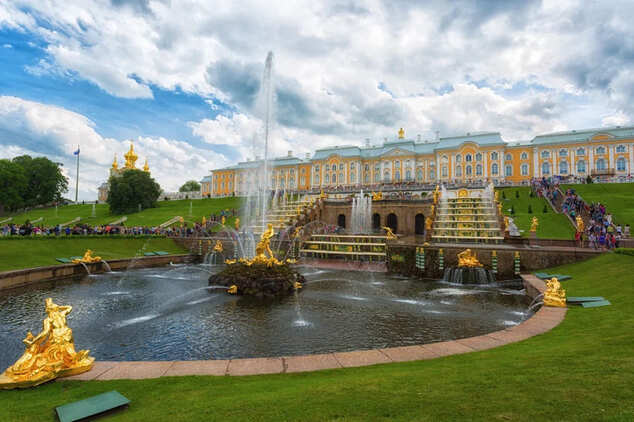
In addition to the city’s historic center, UNESCO has also inscribed the Pavlovsk palaces and parks, Oreshek Fortress, Kronstadt’s forts, the Peterhof Palace and park complex, the Lindulovskaya Grove, and others on its list.
Accommodation in St. Petersburg: you can secure hotel bookings and flight tickets HERE
The Moscow Kremlin and Red Square
The ancient nucleus of Moscow, perched atop Borovitsky Hill, is the Moscow Kremlin. Its origins date back to the year 1147, with initial settlements here tracing back to the Bronze Age.
Originally crafted from wood, the Kremlin underwent reconstruction following a fire, transitioning from white to red stone. This structure continues to stand the test of time.
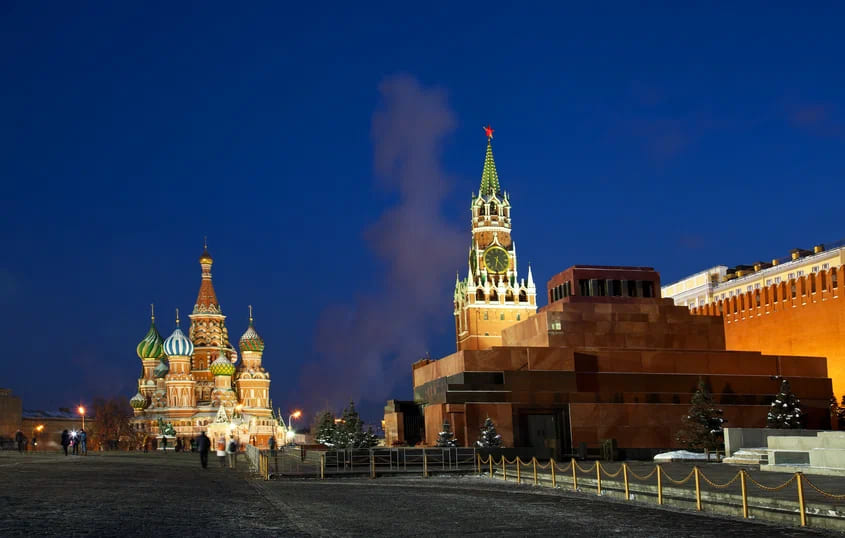
Photo : yandex.ru
Adjoining the Kremlin’s walls is the world-renowned Red Square, boasting attractions like the Historical Museum, Frontal Place, Lenin’s Mausoleum, and the splendid Cathedral of the Intercession of the Blessed Virgin Mary on the Moat, widely known as St. Basil’s Cathedral.
The Moscow Kremlin and Red Square earned a spot on the UNESCO World Heritage Roster in 1990.
Accommodation in Moscow: you can secure hotel bookings and flight tickets HERE
White stone monuments of Vladimir and Suzdal
Vladimir and Suzdal represent two ancient cities that once played central roles in political and cultural spheres. These urban centers embody the rich history and architectural heritage of medieval Russia, offering visitors a glimpse into a bygone era characterized by artistic grandeur and historical significance.
Presently, both cities form part of the Golden Ring of Russia, making them sought-after tourist spots.
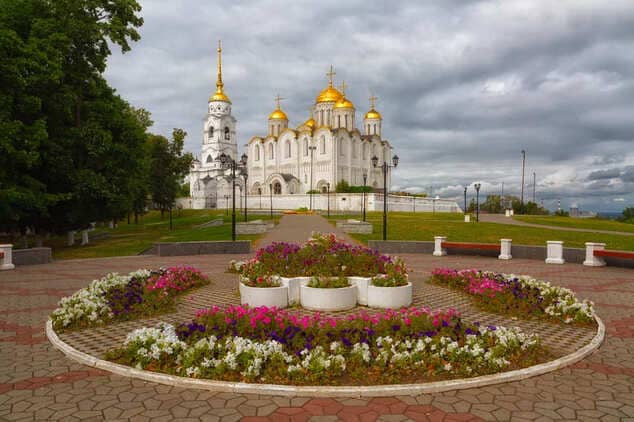
Photo: yandex.ru
These urban centers played a pivotal role in shaping the architectural landscape of Ancient Russia. In Vladimir, visitors can marvel at the Golden Gate, the exquisite Assumption Cathedral, and Dmitrievsky Cathedral from the 12th century, the latter still adorned with unique frescoes by the renowned artist Andrei Rublev.
Accommodation in Vladimir: You have the option to explore hotels and flight tickets HERE
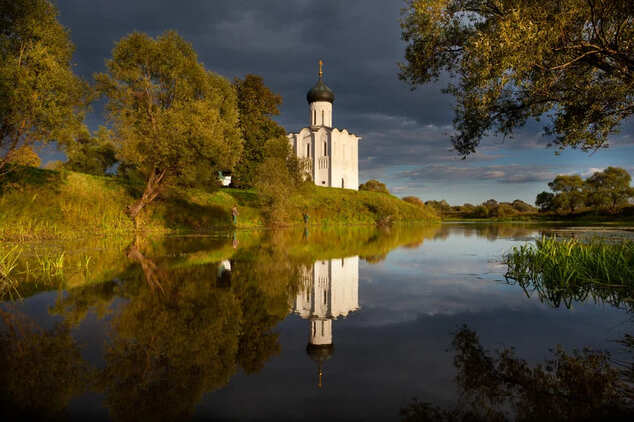
Photo: yandex.ru
Another masterpiece of ancient Russian architecture stands in Bogolyubovo village, a short distance from Vladimir’s center. The Church of the Intercession on the Nerl was commissioned by Prince Andrei Bogolyubsky at the beginning of the 12th century.
Directions to Bogolyubovo: Various transport options from Vladimir include taxis, trains, or buses. Following that, a roughly one-kilometer walk through a protected meadow awaits.
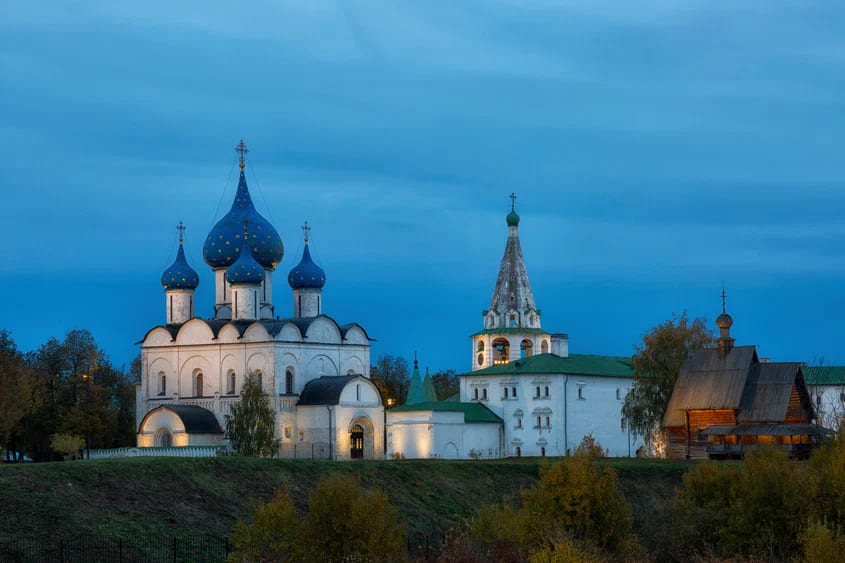
Suzdal is a quintessential Russian town that has preserved its pastoral charm. Noteworthy architectural and historical landmarks include the Suzdal Kremlin, the Cathedral of the Nativity of the Blessed Virgin Mary, the Spaso-Evfimiev Monastery, and the Church of Boris and Gleb in Kideksha.
Getting to Suzdal: Commute from Vladimir via a regular bus or grab a taxi.
Accommodation in Suzdal: You can book accommodations and flight tickets HERE
The monuments in Vladimir and Suzdal were inscribed in the UNESCO World Heritage List in 1992.
Cultural and historical ensemble of the Solovetsky Islands
The Solovetsky Spaso-Preobrazhensky Monastery, established in the 15th century, rests on one of the six isles in the Solovetsky archipelago. For centuries, it served as a spiritual epicenter for the Russian North. During the Soviet era, the monastery served as a penitentiary until 1939.
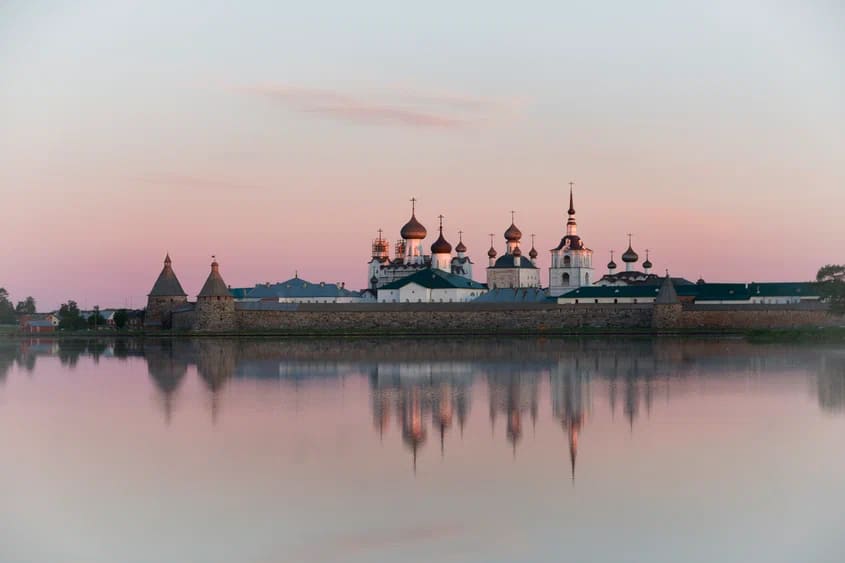
Photo: yandex.ru
Today, the Spaso-Preobrazhensky Monastery functions as an active monastic site, a place of spiritual pilgrimage, and a museum.
The Solovetsky complex exemplifies a monastic environment in the challenging Northern setting, showcasing the faith, resilience, and valor of religious communities during the late Middle Ages.
In 1992, UNESCO recognized not only the monastery but also the hermit monks’ establishments on six islands and the sites connected with the Gulag, alongside the encompassing cultural landscape.
Travel arrangements: By boat from Kemi or Belomorsk, or via plane from Arkhangelsk.
Accommodation: Options include Solovki and Solovetskaya Sloboda hotels.
Church of the Ascension of the Lord in Kolomenskoye
This was Russia’s inaugural tent temple. Tsar Vasily III commissioned its construction to commemorate the birth of his successor, the future Tsar Ivan the Terrible.
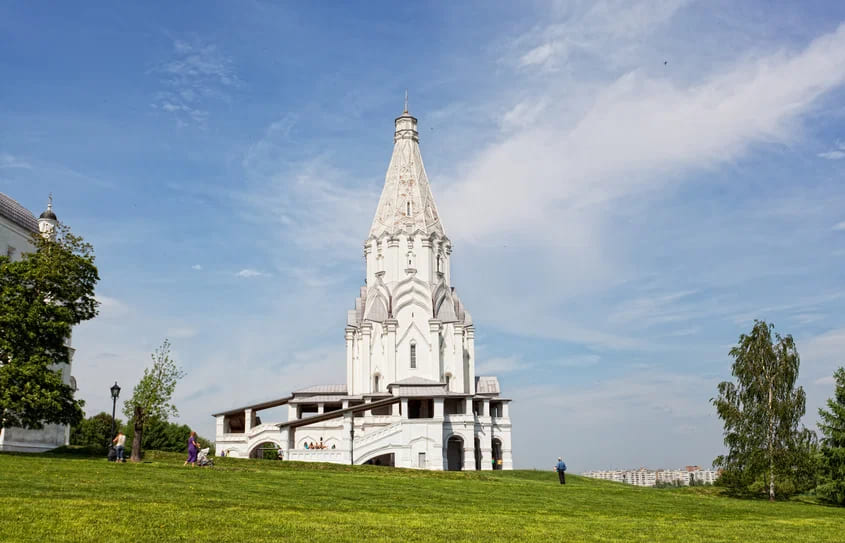
Photo: yandex.ru
Currently, the church entices visitors with its unassuming charm. Religious services are held exclusively on major holy days, and from May to September, visitors can freely explore the temple’s gallery.
The architecture of the Church of the Ascension showcases a blend of conventional Russian architectural elements and innovative European influences.
The Church of the Ascension was listed as a UNESCO World Heritage site in 1994.
Travel directions to Kolomenskoye: Take a train in Moscow to the metro stations “Kolomenskaya” or “Kashirskaya,” then proceed on foot.
Ferapontov Monastery Ensemble
The Ferapontov Belozersky Monastery from the 14th century is regarded as one of the most pristine expressions of Russian medieval art.

Photo: yandex.ru
Today, it operates as both a museum and a pilgrimage site.pride of the Northern Russian National Park can be found in the Cathedral of the Nativity of the Virgin Mary, where you can appreciate the only remaining frescoes painted by Dionysius, the prominent Russian artist of the late XV–XVI centuries.
Getting there: Take a bus from either Vologda (approximately 2 hours) or Kirillov (just 10 minutes). Disembark at the Ferapontovo village stop.
Accommodation options: Stay in hotels located in Kirillov or Vologda.
The architectural ensemble of the Ferapontov Monastery was inscribed in the UNESCO World Heritage List in 2000.
Kazan Kremlin Historical and Architectural Complex
The construction of this citadel commenced under the command of Tsar Ivan the Terrible. Today, this grand fortress stands as the symbol of Kazan, the capital city of Tatarstan.
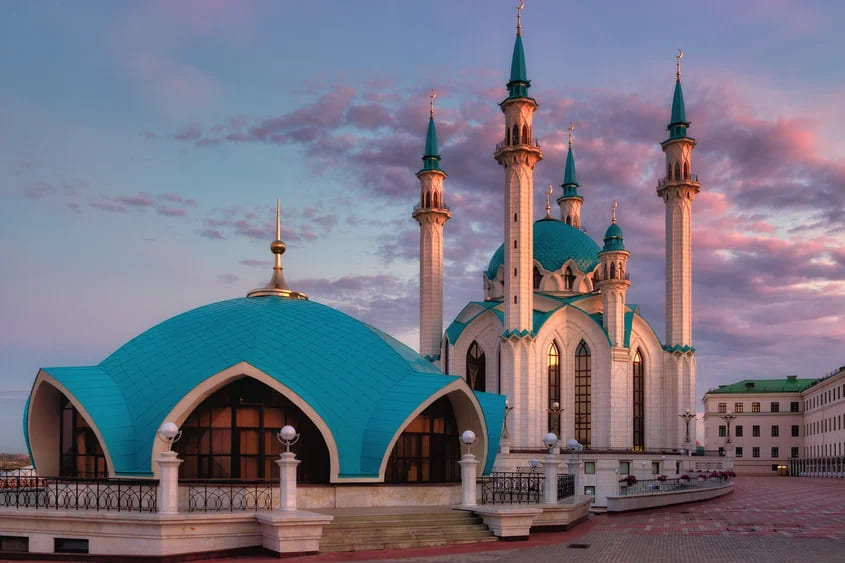
Photo: yandex.ru
The Kazan Kremlin, with its array of monuments, exemplifies the seamless blend of diverse architectural traditions and styles, harmoniously uniting various cultures. Notable attractions include the graceful Kul Sharif mosque, the white-stone Annunciation Cathedral, and the iconic “leaning tower” of Queen Syuyumbike, which is surrounded by several poignant and beautiful legends.
The Kazan Kremlin welcomes visitors at all hours.
This historical site was added to the UNESCO World Heritage List in 2000.
Traveling to Kazan: Reach Kazan by plane or train.
Accommodation in Kazan: You can make reservations for hotels and flights here
Derbent Citadel, Old Town, and Fortress Structures
Derbent is celebrated as the oldest city in present-day Russia. References to a settlement on the site of Derbent date back to the 6th century BC, with the city itself being established as a Persian fortress in 438 AD.
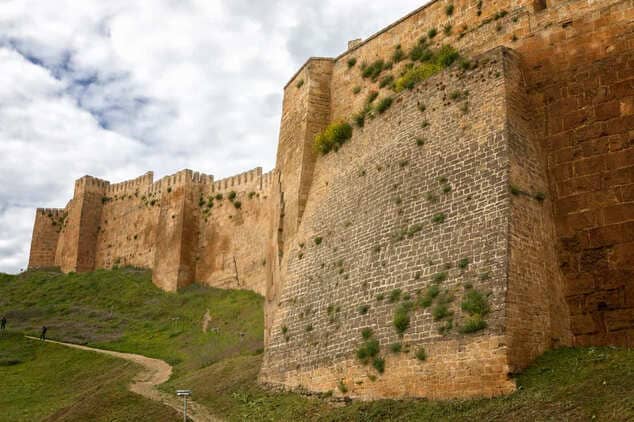
Photo: yandex.ru
Presently, remnants of the ancient city include the fortress of Naryn-Kala, two fortress walls descending towards the Caspian Sea, and the Old Town featuring historical edifices, the Tuti Bike mausoleum, baths, and a cemetery.
Collectively, these structures form an integrated architectural ensemble recognized in the UNESCO World Cultural and Historical Heritage List in 2003.
Travel options to Derbent: Reach Derbent by plane or train to Makhachkala, followed by a train or taxi. Long-distance buses from major cities in central Russia also offer services to Derbent.
Accommodation in Derbent: Select your lodging and flight tickets from our travel page by clicking on this link
Novodevichy Monastery Ensemble
Established in the 1520s, the Novodevichy Monastery is among the most exquisite and renowned monastic complexes in Moscow. The structures of the monastery represent the Moscow Baroque style, which was a popular architectural trend at the time. The interiors are lavishly decorated, and the monastery harbors a vast collection of paintings and relics.
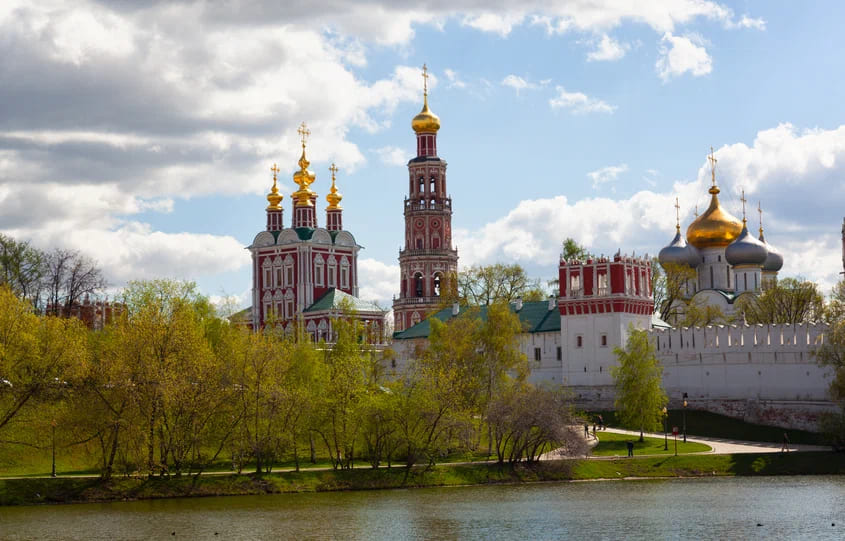
Photo: yandex.ru
The monastery has strong historical ties with the royal family, serving as the destination for women of noble birth seeking to become nuns. Notable members of the royalty and their close associates are laid to rest in the cemetery situated on the grounds of the monastery.
The Novodevichy Monastery Ensemble was inscribed in the UNESCO World Heritage List in 2004.
Accessing the Novodevichy Monastery: It is a short stroll from either the Sportivnaya metro station or the Luzhniki MCC in Moscow.
Yaroslavl Historical Center
Yaroslavl, established in the 11th century, is situated at the confluence of the Volga and Kotorosli rivers. The city boasts a plethora of churches and stands as a vivid example of Empress Catherine II’s urban planning reforms.
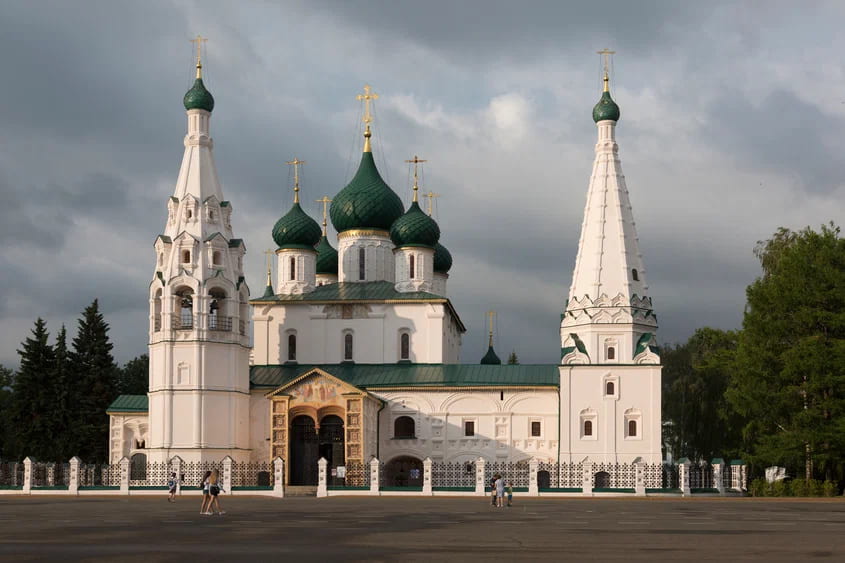
Photo: yandex.ru
Yaroslavl was designated as the focal point of the “Golden Ring of Russia” for a reason. Preserved within the city are over 140 architectural monuments spanning various epochs.Some of the prominent attractions in Yaroslavl include the Spaso-Preobrazhensky Monastery, the Church of Elijah the Prophet, and the 15th main church of John the Baptist in Tolchkov.
Additionally, the city features a picturesque promenade that offers a delightful stroll throughout the year.
Yaroslavl boasts numerous captivating museums, both big and small. For example, visitors can enjoy an interactive exhibit called “Golden Ring,” showcasing miniature replicas of Russia’s most exquisite cities. The “Music and Time” museum allows guests to listen to the melodic tones of ancient musical instruments or vintage gramophone recordings. Furthermore, enthusiasts of panoramic views can ascend to the observation deck atop the bell tower of the Spaso-Preobrazhensky Monastery.
The historic center of Yaroslavl was inscribed on the UNESCO World Heritage List in 2005.
Traveling to Yaroslavl: accessible by train, bus, or river cruise along the Volga.
Accommodation options in Yaroslavl: Book a hotel and plane tickets to/from Yaroslavl HERE.
Architectural Gems of the Pskov School
Ancient Pskov, renowned since the era of Princess Olga, has been a perennial attraction for tourists. Pskov’s churches are distinct in their cubic forms and simplicity, making them instantly recognizable.
Among the captivating architectural marvels in Pskov are the Pskov Krom (Kremlin) and stone churches, some of which date back to the 12th century.
Presently, the Pskov Kremlin is part of the local museum-reserve. Visitors can explore it independently or through guided tours, witnessing the Dovmontov city from the 13th century and other fascinating aspects. However, scaling the fortress walls is unfortunately prohibited.
Accommodation in Pskov: Explore available hotels in the city HERE.
Pskov’s temples were added to the UNESCO World Heritage List in 2019.
Tours of Russia: Enchanting Natural Wonders
Exploring the natural beauty of Russia is an essential part of any visit to this vast country. Our unique tours venture off the beaten path, guiding travelers into the untamed wilderness where they can immerse themselves in pristine forests, crystal-clear lakes, and majestic mountains. Be it hiking in national parks, kayaking along remote rivers, or camping beneath the starlit sky, our tours offer an opportunity to reconnect with nature and revel in Russia’s natural splendor.
The Untouched Forests of Komi
The expansive virgin forests, untouched by human hands, are situated on the western slopes of the Northern and Circumpolar Urals. Here, tourists can find the renowned peaks of the Urals like Narodnaya, Karpinsky Peak, and Manaraga Mountain.
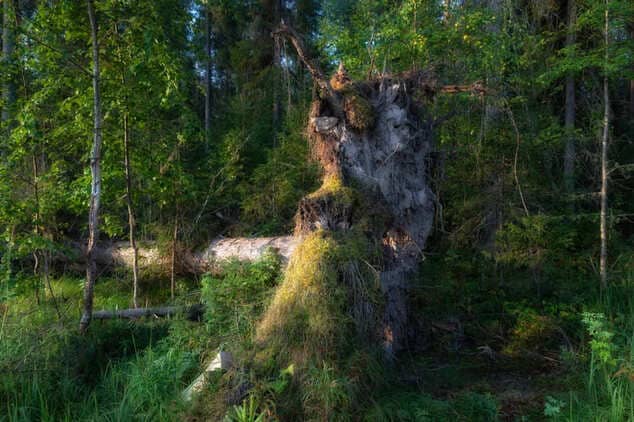
Photo: yandex.ru
Spanning across Yugyd Va National Park and the Pechora-Ilych Reserve, the virgin forests of Komi host many breathtaking and mystifying attractions: the Manpupuner weathering pillars resembling frozen giants, Mount Yerkusey believed to be the abode of Komi’s guardian spirit, and more. These forests are teeming with diverse wildlife and flora, with many species listed in the Red Books.
The Komi virgin forests were designated as a UNESCO World Heritage Site in 1995, becoming Russia’s inaugural natural site under UNESCO protection.
Lake Baikal
Lake Baikal, a world-renowned body of water, straddles the Irkutsk region and the Republic of Buryatia in Russia. Being one of the oldest lakes globally at approximately 25-30 million years old, Baikal stands as the deepest lake on Earth, holding 19% of the planet’s freshwater reserves.

Photo: yandex.ru
Over millennia, a unique ecosystem has developed within the lake, offering insights into the evolutionary processes of our planet. Lake Baikal…is significant not just for scientific purposes, it is also among the most appealing destinations for travelers. Numerous explorers visit this place to traverse the pristine ice during winter and unwind on the shorelines of the vast lake in summer.
How to reach Baikal Lake: via bus from Irkutsk, through minibus or train from Ulan-Ude.
Accommodation options: favored holiday spots on Lake Baikal are the Listvyanka village and Olkhon Island, but it is advisable to reserve hotel rooms ahead of time. Alternatively, you can opt for any hotel along the coast: the service quality will be consistent, and there will be more seclusion.
Lake Baikal was inscribed on the UNESCO World Heritage List in 1996.
Unique Tours of Russia: Lena columns
An extensive rock ridge extending alongside the Lena River bank for several kilometers. The tallest columns soar to a height of 200 meters. To put things in perspective, the highest point of the Great Wall of China is 16 meters.
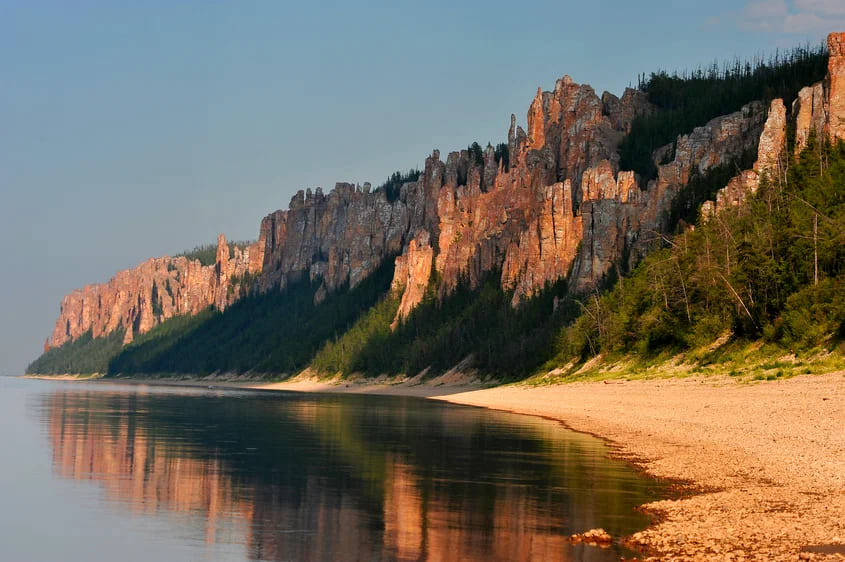
The term “columns” originated from the resemblance of the rocks to stone pillars. Locals uphold the belief in the tale that a metropolis constructed by the deities is concealed amidst the colossal stone columns. The deities are slumbering at present, yet they will awaken at some point to emerge among humans and direct them on how to exist in tranquility and concord.
For aficionados of serene contemplation, the ideal viewpoint would be from the water, while enthusiasts of engrossing activities would appreciate the ecotrope that leads to the observation stations atop the columns. Nonetheless, it is most beneficial, of course, to amalgamate both rafting and trekking.
How to arrive there: by car from Yakutsk 115 km to the Bulgunnyakhtakh village, then by boat along the Lena. It is most convenient to embark on these expeditions with an arranged excursion.
Lena Columns were added to the UNESCO World Heritage List in 2012.
Sceneries of Dauria
Dauria is a territory situated in Transbaikalia, bordering Mongolia and China. It stands as one of the most well-maintained steppe panoramas globally. Exceptional birds reside here, certain of which are enlisted in the International Red Book — for instance, the Daurian crane, bustard, relict gull. As autumn and spring unfold, Dauria evolves into one of the premier spots for birdwatching in Russia: myriads of migratory birds soar over these steppes.
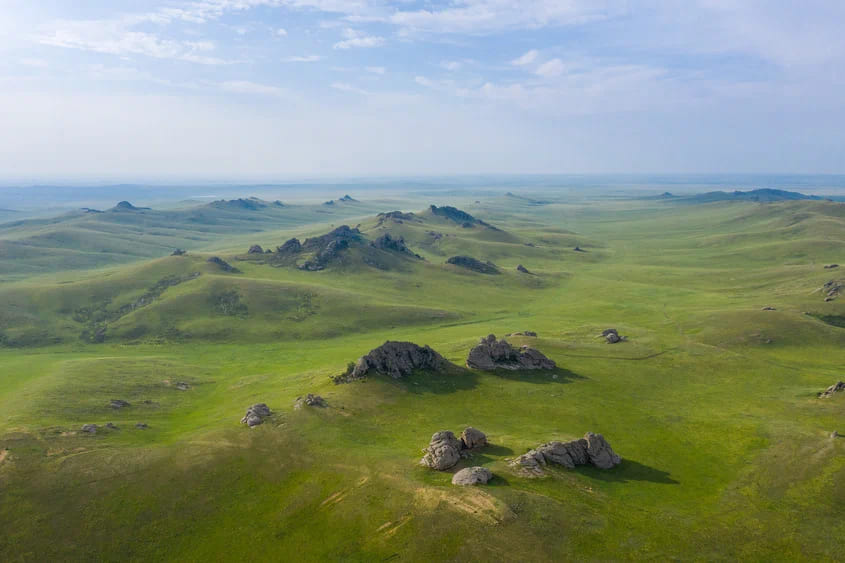
Photo: yandex.ru
Mongolian dzeren antelopes from the Red Book gallop across the slopes here, Mongolian tarbagan marmots inhabit burrows, and somber fluffy manuls venture for prey at dusk.
Dauria was encompassed in the UNESCO World Heritage List in 2017.
In addition to uncovering concealed treasures and natural marvels, our unconventional tours of Russia also grant voyagers the chance to engage with local communities and immerse themselves in the warmth and hospitality of the Russian populace. From residing with native families to taking part in interactive workshops with craftsmen and artisans, our tours furnish a distinctive avenue to connect with the local culture in a profound and authentic manner. By involving themselves in the daily routine of Russian communities, travelers can develop a more profound insight into the nation and its people, fostering bonds that may last a lifetime.
Whether you are a seasoned voyager seeking to delve into a different facet of Russia or a first-time visitor eager to witness beyond the typical tourist sites, our off-the-beaten-path tours deliver a matchless and lasting experience. Highlighting hidden gems, local charisma, and genuine cultural encounters, our tours unveil a glimpse into the core and diversity of this fascinating nation, allowing voyagers to explore the genuine essence of Russia in all its magnificence and variety. Thus, why not tread off the customary route and unearth the concealed gems of Russia with us? We assure you that you will not be disappointed.


